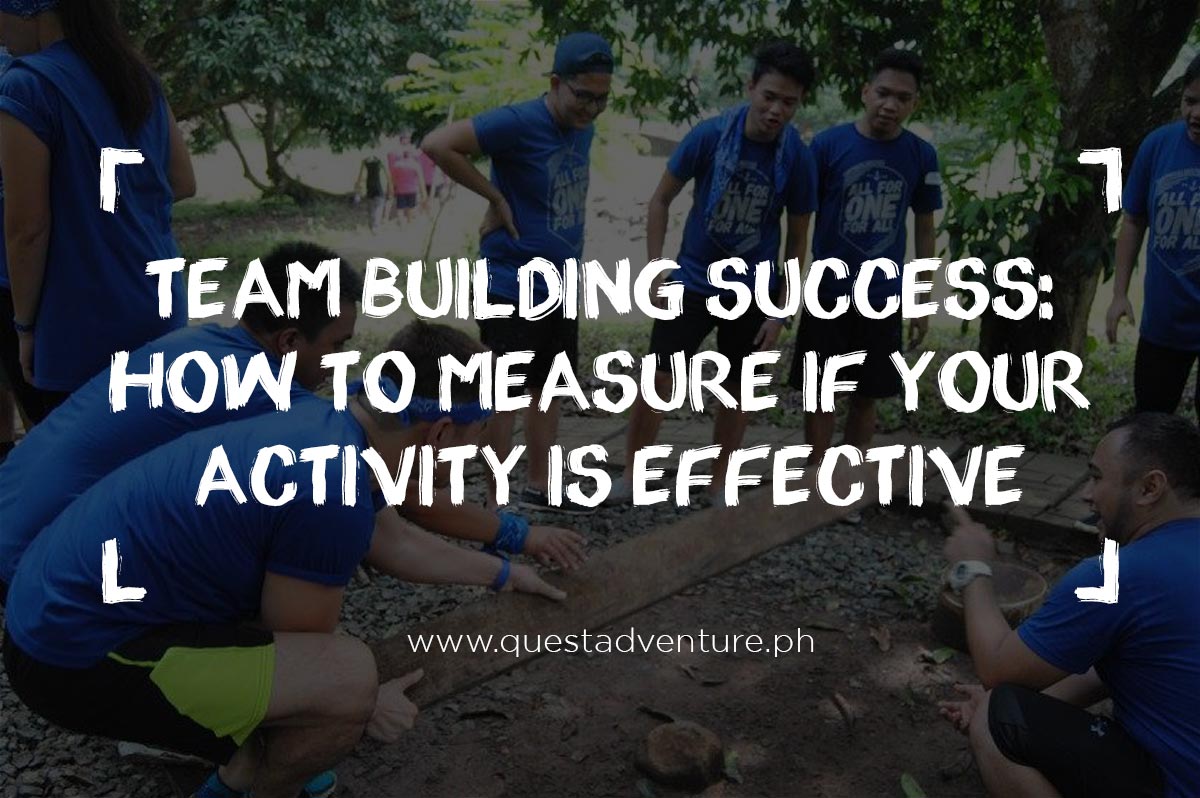
Team Building Success: How to Measure if Your Activity is Effective
World-class teams do not show up on thin air. It has to be built, and it needs an ample amount of time and effort. Plus, excellent leadership.
For their part, team building activities help managers and employers gain a better understanding of each other’s strengths and weaknesses.
Taking part in activities helps build skills that are linked to great teamwork, from cooperation, trust, and communication, helping everyone to work cohesively as a team after they return to the workplace.
In this post, we will be discussing how you could measure whether or not a particular team building activity is effective:
Picture Out a Successful Team
Although this might come off as vague, research has proved time and time again that the most productive and successful teams share certain characteristics.
In a study by Harvard Business Review, the team who will win was accurately predicted by research, based alone on the members’ social characteristics, no matter what the quality and strength of their pitch.
While some people are naturally great communicators and more charismatic than others, it shows us that the most important thing behind a company’s success is the innate skills of every individual contributor.
Create a Baseline for Comparison
It is a lot easier to monitor the success of your team building activity if you already have a baseline for comparison, as well as the key objectives, early on in the planning stage.
Recording specific metrics that are crucial when hosting your event helps you set up a benchmark and identify areas where you might want to improve.
Measure in Stages
One of the misconceptions about team building is that it is only a one-time investment, and you will immediately see lasting results. But it does not work that way.
When you measure a team-building activity’s effectiveness, it has to be measured out in stages to get accurate results:
Stage One: Aftermath Positivity
When employees get back to the workplace, the day after the team building program, there would be a lot of positive energy floating around. This could lead to a boost in productivity.
You might notice that there is a massive difference between your baseline metrics and the numbers you are recording on the first day back to work.
While these might not be sustainable in the long run, it is great to see some return on investment.
Stage Two: Settling In
Employees will bring back the momentum of the team-building activity in the first week of work. They will likely get back to their usual groove on the second week.
At this point, you have a better idea of the improvements you have reaped from team-building exercises. As well as how much you are going to get as a return on investment.
Stage Three: Sustainenance
A month after the team-building exercise is where you could determine how much more your employees need to reach the goal that you have first created when you set out a plan together.
Evaluate Your Team Building Activities
To be able to understand the long-term impact of your team building initiatives, make sure that you ask feedback regularly. Apart from asking general feedback, do not hesitate to ask your employees about the team-building event itself.
Encourage them to reflect on the event. Discuss a couple of team-building skills and lessons that could be applied to their job to boost retention and engagement.
Moreover, you could also send surveys through apps like SurveyMonkey and TINYpulse to help you measure and evaluate the impact of these team-building events.
Monitor Performance Improvements
A good metrics system has an excellent starting point and has a graph that will show the progress that was made.
After a couple of team building sessions, you might see consistent results and are not falling off. That’s how you know that both your company and employees are benefiting from the whole team-building experience.
Remember that team building itself is an investment. Measuring the effectiveness of the activity lets you put a price tag on how much return you are expected to get.
You should not want to get involved with a team-building program without having a clear objective in mind. That includes financial returns to your company in the long run.
Over to You
To get the best results, always commit to incorporate team building events in your yearly social calendar. Track your improvements as you go.
Learn from what did not work out and what did not quite take off after the event. Then identify the key areas to improve upon in the future.
Do not hesitate to ask for guidance to help you get the most out of your event budget. Know what kind of activities that will help you reach your goals. Hold an engaging and unforgettable team-building event as possible. Contact Quest Adventure Camp for inquiries!








No Comments
Sorry, the comment form is closed at this time.